In this article, I wish to initiate a discussion regarding the potential encounter between homosapiens and dinosaurs. These are questions that I have never pondered before, but my hike in Jordan has prompted me to reconsider.
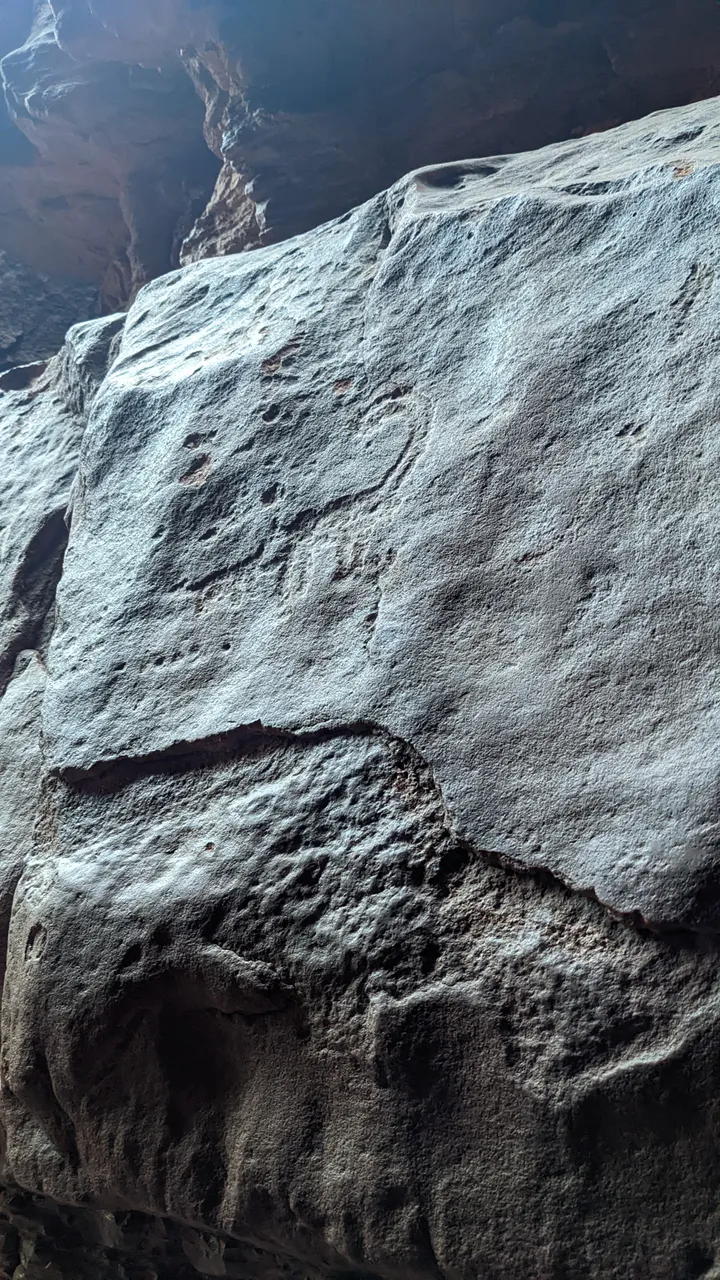
The hike was truly breathtaking, taking place in a remarkably beautiful region. I came across numerous awe-inspiring sights. However, upon reviewing my photos in the evening, I noticed something intriguing. The image displayed above appears to depict a well-executed carving within a cave. Yet, it also presents an unexpected element.
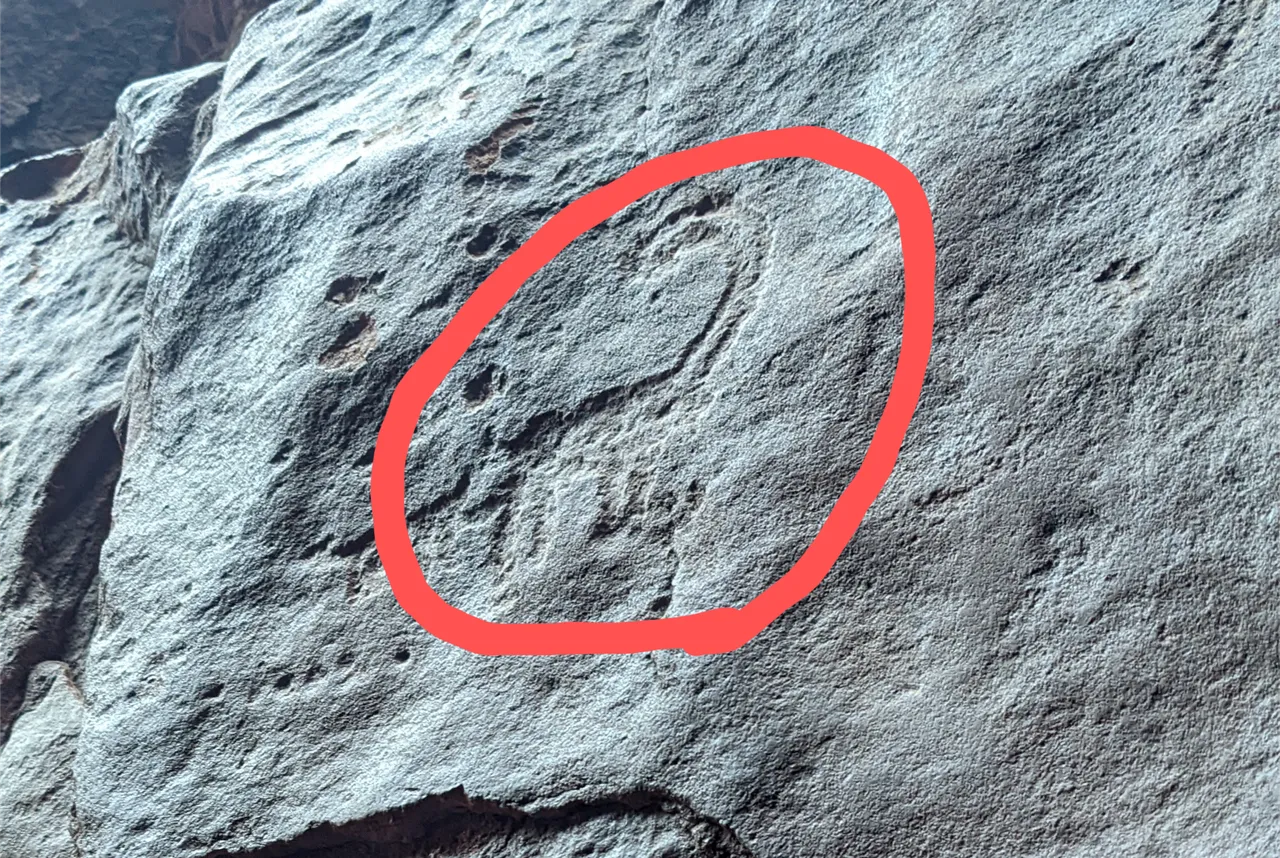
If you examine the photo closely, you may notice the semblance of a dinosaur 🦕. Naturally, I found myself wondering who crafted this carving. There were three distinct carvings on the walls: one situated higher up, another lower down, and Arabic writing at the entrance. The Arabic writing, the youngest of the three, dates back approximately 1000 years. Although I lack proficiency in Arabic and cannot decipher it, I consulted some Arabic-speaking friends who informed me that the writing is intricate and archaic.
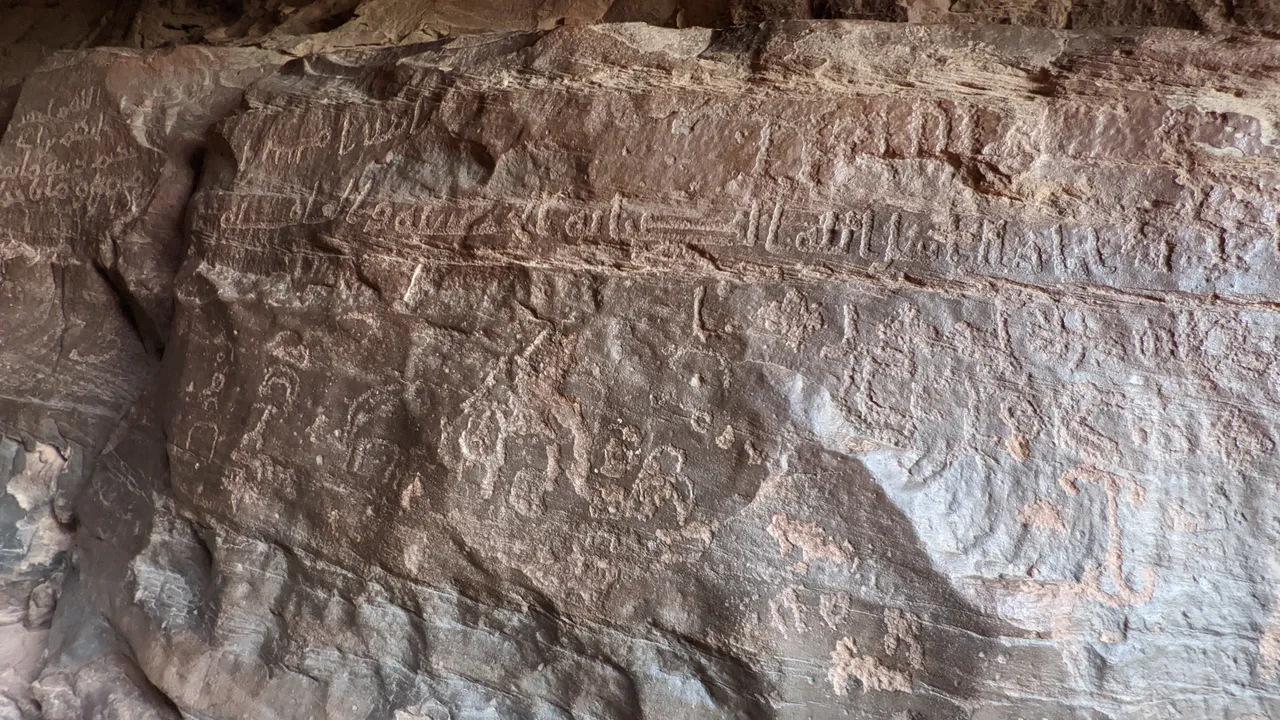
Then there are the other two carvings: the one lower down is of medium age, while the highest one is the oldest. This particular carving enjoys UNESCO World Heritage status and is estimated to be around 12000 years old.
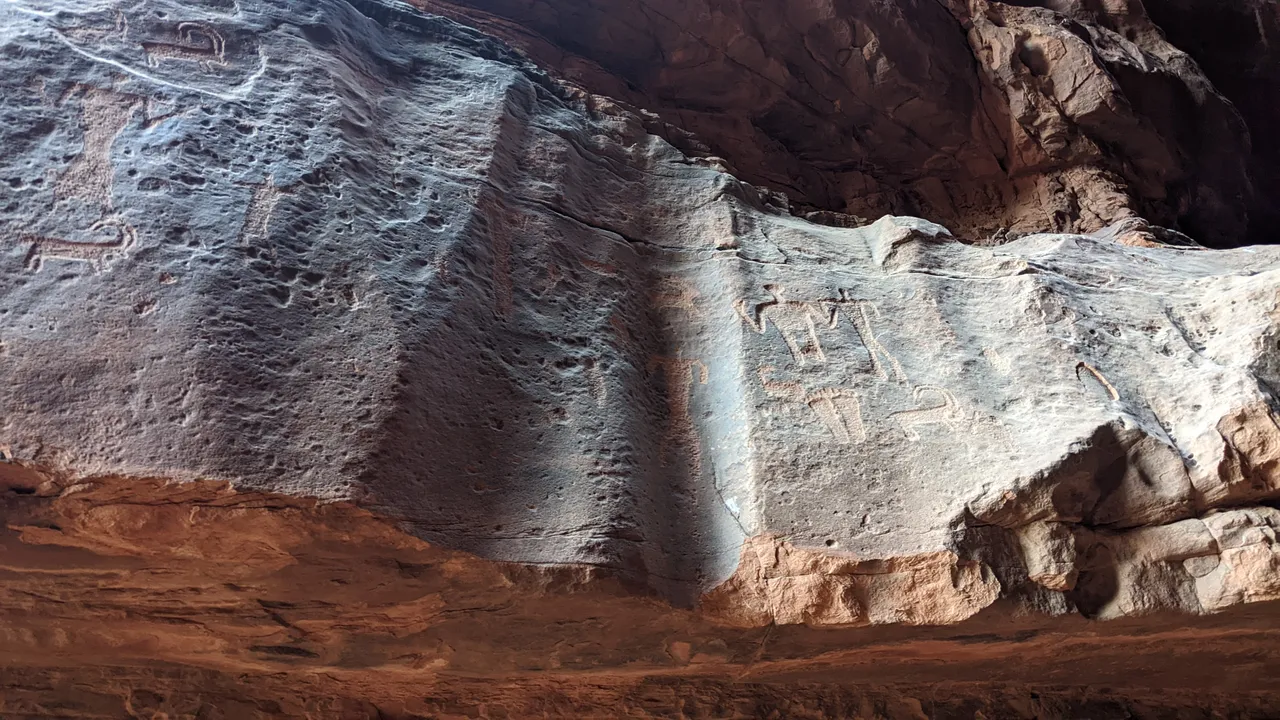
Thus, we find ourselves contemplating what transpired during this era around 10000 BC. It appears that the inhabitants or travelers in southern Jordan took to carving images of an animal reminiscent of a dinosaur. In other photos, I encountered further depictions of this creature. It is unlikely that these individuals possessed access to scientific knowledge regarding such animals. It is plausible that they encountered this creature in the border region between Jordan and Saudi Arabia, or perhaps during their travels elsewhere.
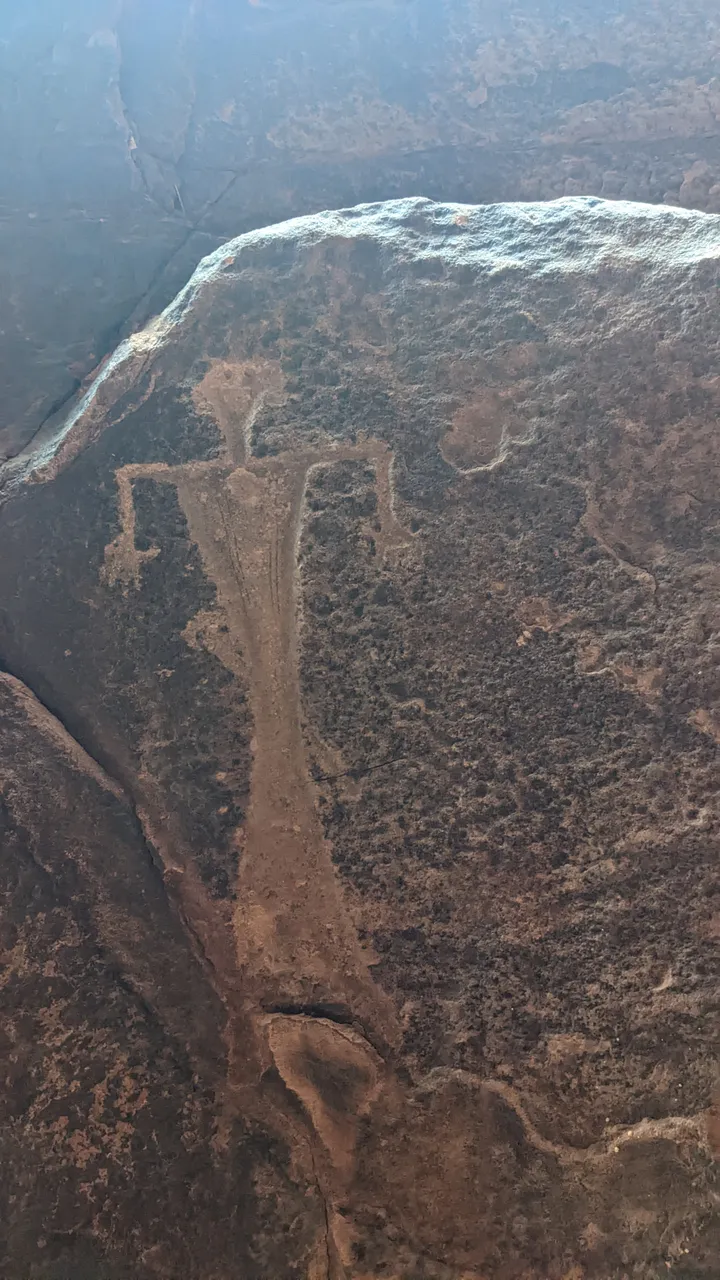
What was the state of this region at that time? Was it already a desert? If so, how did people manage to survive in that sandy, rocky desert, and what kind of fauna existed there? Unfortunately, we are unlikely to attain definite answers. Nonetheless, the stone carvings stand as silent witnesses to whatever may have transpired in 10000 BC.
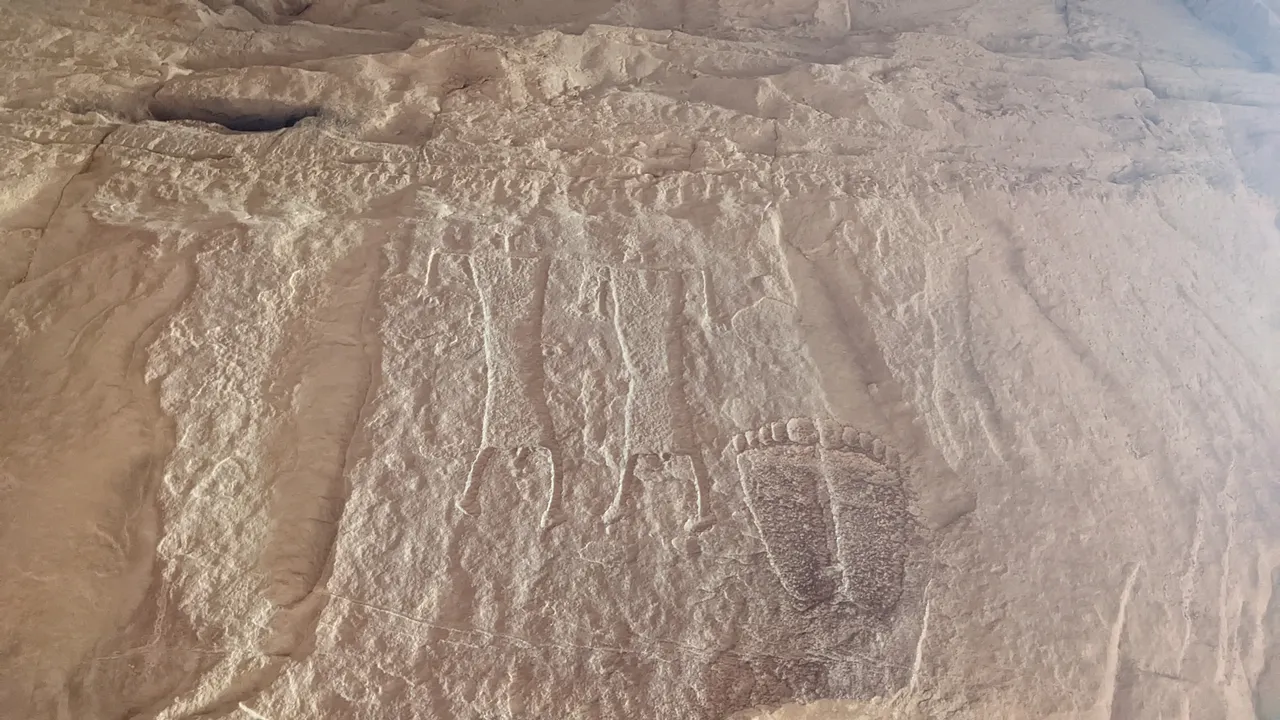
Coinciding with this period, the earliest civilization in Turkey began to flourish. Humans in these regions learned to erect architectural structures between the Euphrates and Tigris rivers, which the Bible says was once a paradise.
Notably, an archaeologist named Klaus Schmidt, hailing from Germany, unearthed the earliest known examples of human architecture at Göbekli Tepe. While numerous theories surround this site, its dating places it around 10000 BC—coinciding with the period when a group of humans in southern Jordan crafted their stone carvings.
The answers will forever remain elusive, perhaps those residing in Jordan and Turkey had familiarity with one another. Perhaps their awareness of each other and respective stages of development were vastly disparate. In Göbekli Tepe, they skillfully maneuvered immense boulders and meticulously crafted three-dimensional engravings, whereas in Jordan, this might have occurred at a considerably earlier period. Did those humans ever have any encounters with dinosaurs, ponder the origins of these engravings!
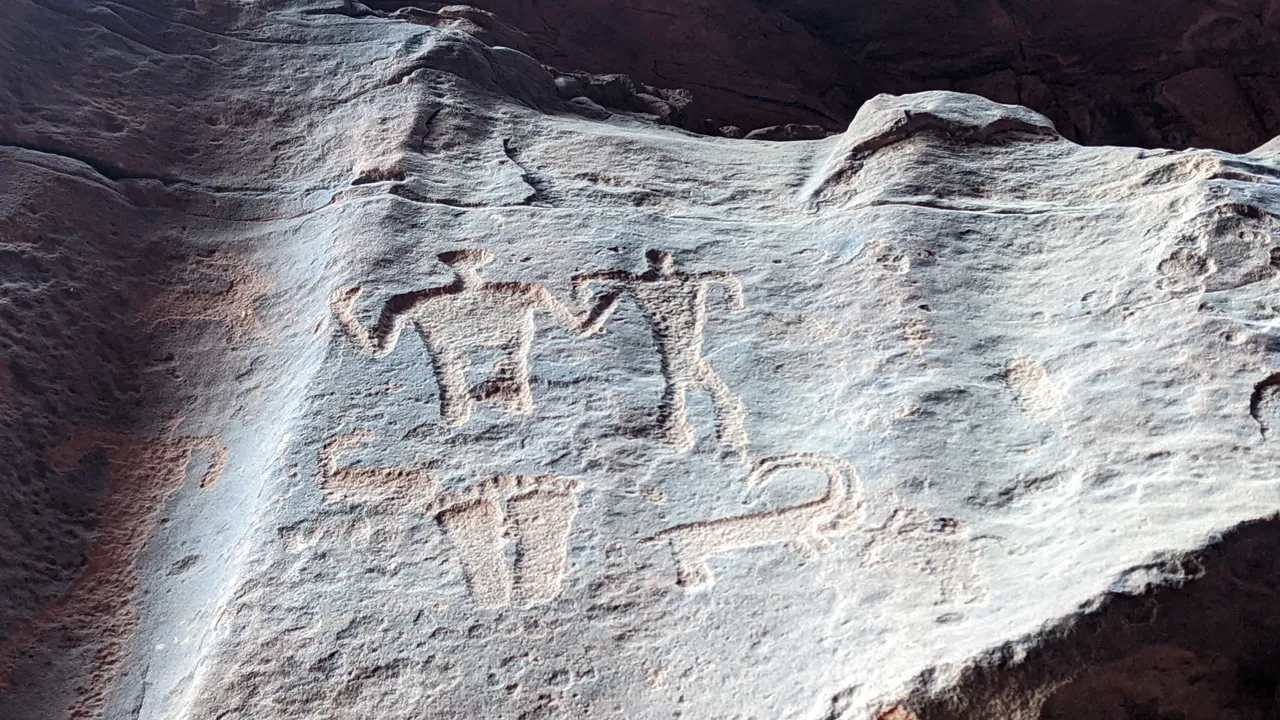
What are your thoughts on this matter? How do you perceive the appearance of this creature?
In my opinion, nothing captivates one's interest more than the study of our history and the exploration of our ancestral roots. Simultaneously, it represents the most profound enigma in our world. Gratitude is owed to all those individuals who devote their efforts to unraveling this perplexing puzzle.
